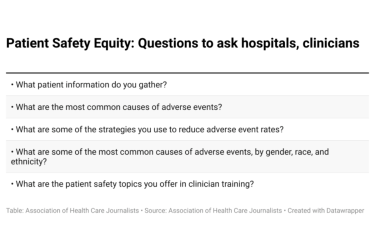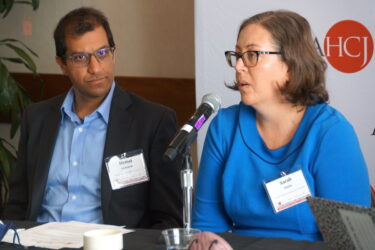
When it comes to food as a social determinant of health, the issue can be daunting for reporters. Is it about cost? Or access, location and time, or maybe behaviors, education and literacy? What about obesity and other diseases? There are so many factors that it can be hard to settle on an angle to investigate.
If you’ve thought about trying to cover food as a health issue but haven’t been sure exactly where to start, the November issue of Health Affairs could be a good launching pad. The journal, which is available free for AHCJ members, dedicated the issue to food – from shopping habits and menus to Medicaid costs and obesity.
More than two dozen articles examine an issue that more and more experts are tying not just to poverty but also to health and health care costs. The overview piece serves up the major issues surrounding food and health, while other sections explore the role of restaurants, shopping and manufacturing. The issue also delves into diet and disease impact.
At a Nov. 5 forum in Washington, D.C., to spotlight the issue on the day the Health Affairs issue came out, many of the authors spoke about the impact of not only people’s choices, but also the nation’s larger food systems and on the population’s relationship between food and their health. The Robert Wood Johnson Foundation, a health and wellness advocacy group, sponsored the forum.
One study covered in the issue looked at a two-year pilot program, at food banks in California, Ohio and Texas, which aimed to give low-income diabetes appropriate food to help manage their disease. Dr. Hilary Seligman of the University of California, San Francisco, one of the study’s authors, said during the Nov. 5 panel that food pantries are moving beyond the idea that “any calorie is a good calorie,” according to Joyce Frieden , who covered the event for MedPage Today.
Another article examined the $8 billion price tag on the joint federal-state Medicaid program that attributed to severe obesity. Another piece by University of North Carolina Chapel Hill’s Barry Popkin and others looked at an initiative by Wal-Mart that found lackluster results, concluding “more systemic shifts” may be needed.
While some of the findings may not be breaking news, it’s worth taking a look at the Health Affairs issue for ideas worthy of deeper reporting. Reporters could look at more recent Medicaid costs in their state, or the impact that various retail and other programs may or may not be having in their area. Ask: what other strategies are food banks and community-based organizations employing to address nutrition, disease or food insecurity?
Access to the full text of the articles is included with AHCJ membership. Members can subscribe to Health Affairs by filling out a form available here.









